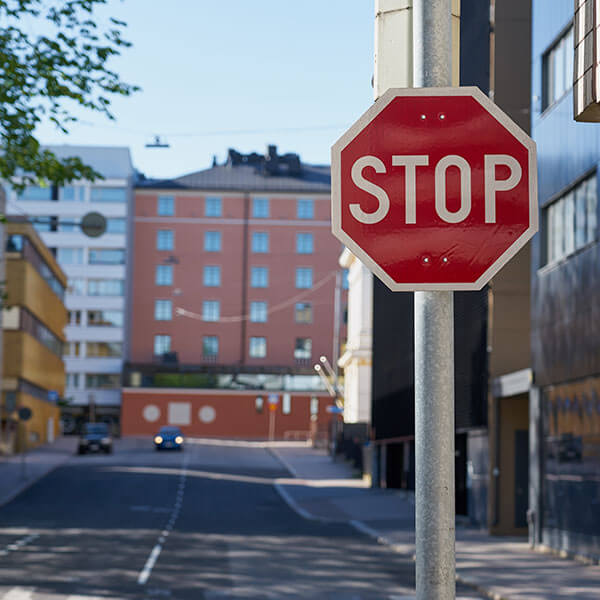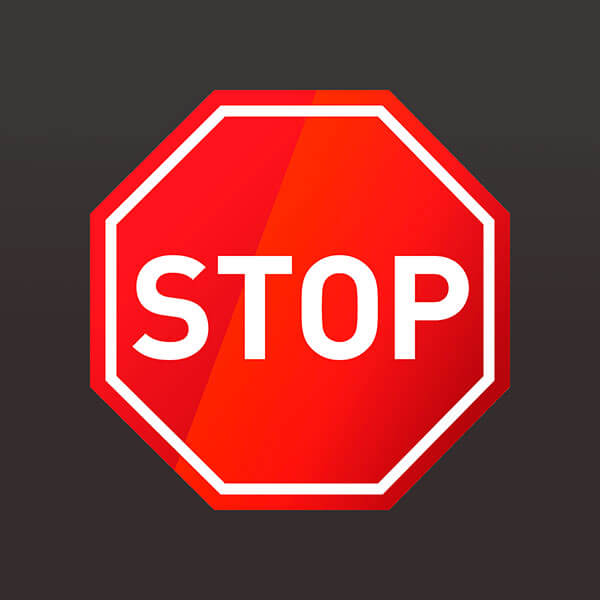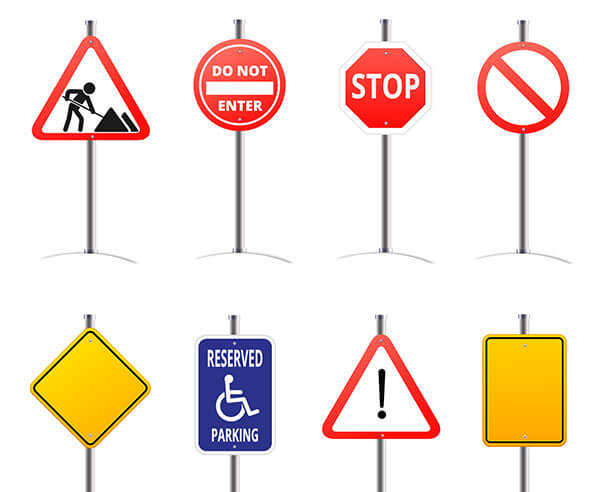Introduction
Looking to buy a stop sign?
Smart move. Stop signs keep traffic safe. They tell people where intersections are. They help police enforce the law. Stop signs save lives.
Smart move. Stop signs keep traffic safe. They tell people where intersections are. They help police enforce the law. Stop signs save lives.
You are probably curious where to get a stop sign. Maybe you work for an apartment complex, home owners association, or a local municipality. Maybe you are in a larger government office and looking to see if you can get better negotiated pricing than your current contract.
In this article, we will talk about how stop signs came to be, the different types available, and where to buy them.
If you’re looking for our article about the rose toy article here.
When did people start using stop signs?
Firstly, a stop sign is a traffic sign which acts as a reminder for drivers to check their surroundings and ensure that the intersection is clear of incoming traffic and pedestrians before continuing past the sign.

Stop signs came into use when they were first made in Detroit, Michigan around 1915. The earliest design had black letters on a white background and was smaller than the current size, at 24 by 24 inches (or 61 by 61 centimeters.)
The need for design standardization and increased adoption occurred when more people started owning automobiles and there were higher number of roadway construction projects nationwide.
International adoption began in 1968 when Europe initiated an effort to standardize road travel across their borders. What occurred was that the latest specifications set by the Manual on Uniform Traffic Control Devices for Streets and Highways (MUTCD) were adopted by the Vienna Convention on Road Signs and Signals as part of United Nations Economic Commission.
How did stop signs look like before?
After its initial design in 1915, from 1924 to 1954, stop signs either had a red or black “STOP” over a yellow background. The field was chosen to be yellow because, at the time, red materials that were fade-resistant were not available.
The design of the stop sign underwent changes seven more times, totaling eight alterations, all the way until 1971.

Where are stop signs used?
You can typically see stop signs at roadway intersections.
What are the standardized features of stop signs?

There are plenty of pitfalls to look out for when buying a stop sign. The best stop sign is made to national highway safety standards and includes quality reflective tape. Plus they have to be the correct size and built with quality materials.
In 1922, the American Association of Highway Officials created a standard design for stop signs to prevent confusion, which is the octagonal shape that we are all familiar with.
After several color changes, the white text on red background design was settled in 1954.
The standard size is 30 inches, with a white border of 20 millimeters. Furthermore, the sign needs to be put at a height of at least 7 feet in urban areas and 5 feet in rural areas.
These critical features are standardized in stops signs across the globe.
What other kinds of stop signs are there?
Stop signs typically have the word “STOP” written on it, but you may find various kinds to fit with the immediate surroundings, which are essentially traffic stop signs and also facility stop signs.

Stop signs typically have the word “STOP” written on it, but you may find various kinds to fit with the immediate surroundings, which are essentially traffic stop signs and also facility stop signs.
Examples of traffic stop signs
- Stop All Way sign
- Stop 4 Way sign
- Stop 3 Way sign
- Stop 2 Way sign
- Bilingual Stop Alto sign
- Bilingual Stop Pare sign
- Stop Ahead sign
- Stop For Pedestrians (right arrow) sign
- Stop For Pedestrians (left arrow) sign
- Stop For Pedestrians In Crosswalk sign
- Stop For Children In Crosswalk sign
Examples of facility stop signs
- Stop Sound Horn Proceed with Caution sign
- Stop Proceed Slowly sign
- Stop Look Out For Forklifts sign
- Stop Forklift Crossing sign
- Stop No Pedestrians Fork Trucks Only sign
- Stop Safety Starts Here sign
- Stop Fasten Your Seat Belts sign
- Stop Pedestrian Crosswalk sign
- Stop Wrong Way Do Not Enter sign
- Stop Do Not Enter sign
- Stop Look Before Exiting sign
- Stop Proceed with Caution sign
- Stop Exit Only sign
- Stop Entrance Only sign
- Stop Wait Here For Gate to Open sign
- Stop Authorized Vehicles Only sign
- Stop Employees Only sign
- Stop Check With Guard sign
- Stop Check With Guard Before Entering sign
- Stop Check With Guard Before Leaving sign
- Stop All Visitors Must Register sign
- Stop All Visitors Report to Main Office sign
- Stop Check In Here sign
Are stop signs different across the world?
The major difference in stop signs across various regions are merely the language used.
In English-speaking countries, such as the United States of America and the European Union, stop signs use the word “STOP”. On the other hand, non-English speaking may adopt their own languages on the front of a stop sign. They can also use a combination, in which the English word is situated on the top of their local language.
In terms of shape, many countries use the octagonal shape, such as South Korea, Turkey, Mexico, China, Canada, Brazil, and others. However, there are a few exceptions, such as in Japan where they use a triangular or circular sign.
How do I choose the correct stop sign?
There are various aspects to stop signs that need to be looked out for.
Size
Stop signs come in generally four sizes: 18×18 inches; 24×24 inches; 30×30 inches; and 36×36 inches.
However, not every sign size is appropriate for every situation.
The MUTCD have specifications that detail the minimum size a stop sign should be used in any particular application.
18×18 inches or less
Stop signs that are 18×18 inches or less are not MUTCD compliant and should not be posted on any public roadway. The emphasis is on public here, because it can be used indoors or outdoors on any private property. Examples of private property includes parking garages, driveways and parking lots.
24×24 inches
Stop signs that are 24×24 inches are the minimum size required by the MUTCD for publicly travelled roadways. These are frequently used in streets that are not dense with traffic and secondary roads which have low speed limits. These signs can also be used in place of 18×18 stop signs.
30×30 inches
Stop signs that are 30×30 inches are the minimized size required by the MUTCD for conventional single-lane roadways. On the other hand, the 36×36 inches are the minimized size required for conventional multi-lane roadways and expressways.

Location
The location in which a stop sign will be set up in will determine what it should be made of.
For instance, a rural area where it frequently rains requires material that will not rust, while an open area with direct contact to sunlight or a hot environment requires material that can withstand high temperatures.
This brings us to the next aspect to consider.
Material
The three most commonly used sign materials are polyethylene, steel and aluminum.
Polyethylene

Polyethylene, or plastic, is a good material as it is lightweight, durable and will not bend, crack or rust. It is also safe as there are less chance of injury or damage if the stop sign falls over, for whatever reason.
Steel

Steel is ideal for outdoor use as it is made of unique galvanized coating that prevents rusting. Since steel is very durable, it does not bend, making it particularly suitable for places with strong winds, which polyethylene stop signs may not be able to withstand due to its lightness.
Aluminum

Aluminum is 30% lighter than steel, which makes it much easier to lift and hang compared to steel. It is the most ideal for outdoor use as it is guaranteed not to rust, especially areas where there is exposure to corrosive salt like salty air from coastal regions or parts of a country that uses a lot of corrosive road salt during winter.
Reflectivity
There are three different levels of reflectivity which comply with MUTCD requirements: engineer-grade, high-intensity, maximum-intensity.
What is not commonly known is that sign reflectivity will degrade over time due to exposure to sunlight, harsh weather and environmental damage.
As a result, in order to ensure safety of drivers and pedestrians in roadways, it is important that reflectivity is checked periodically and replace the stop sign whenever necessary.
Engineer-Grade
This grade complies with the minimum D.O.T. and MUTCD requirements for street use. Drivers can see stop signs made of this material up to 500 feet away, so this is suitable for areas with slow traffic, such as private parking lots or at the end of driveways.
High-Intensity
This grade is three times brighter than the engineer-grade and can be seen from a distance of up to 1,000 feet. Furthermore, although the minimum requirement is the engineer-grade, MUTCD actually recommends the high-intensity reflectivity as the “best practice” option for high traffic areas, such as public roadways and other high-traffic areas.
Maximum-Intensity
This grade is ten times brighter than the engineer-grade and can be seen from a distance of up to 1,500 feet. This makes this material highly suitable for use on high-speed roadways and dangerous intersections with a history of accidents.
What reflectivity grades of aluminum is there for stop signs?
Stop signs that are typically made of aluminum have reflectivity levels that are either one of these three grades.

Engineer Grade Reflective Sheeting/.80 Aluminum
This material can last for around seven years under good conditions before the sign needs replacing, however it does not rust. It shines brightly so it allows drivers to see the sign clearly at night.

High Intensity Reflective Sheeting/.80 Aluminum
As the name implies, the reflective capabilities of this material is indeed of high intensity; it is actually 3 times more reflective than the engineer grade. This is due to its surface being wrapped with fluorescent sheeting.
Just like the engineer grade, it can also last for around seven years and does not rust.

Prismatic Reflective Sheeting/.80 Aluminum
This contains the highest level of brightness due to its 0.8 inch thickness of fluorescent sheeting on the surface.
I need to buy a new stop sign. Where can I buy one?
There are many websites available for you to purchase online from.

If you live in the USA, you can make an order from the following links:
- SafetySign
- Amazon
- USA Traffic Signs

If you live in the UK, you can make an order from the following places:
- Road Signs Direct
- Stocksigns
- Archer Safety Signs
Conclusion
Stop signs are highly necessary as they can help prevent road accidents and control traffic in areas of high density. It is, therefore, crucial that the signs are standardized in terms of shape, size and color across the globe to allow universal understanding, especially for foreigners driving around in or visiting an unfamiliar city. Choosing the right stop sign will vary mostly depending on location.
References
- “Stop sign,” Wikipedia
- “History of the Stop Sign,” My Parking Sign
- “What are the measurements of a stop sign?,” 2017, azcentral, GetawayTips AZ Central
- “How to Choose the Correct Stop Sign (Full Version) | Emedco Video”, 2015, Emedco
- “MUTCD Stop Signs,” Safetysign